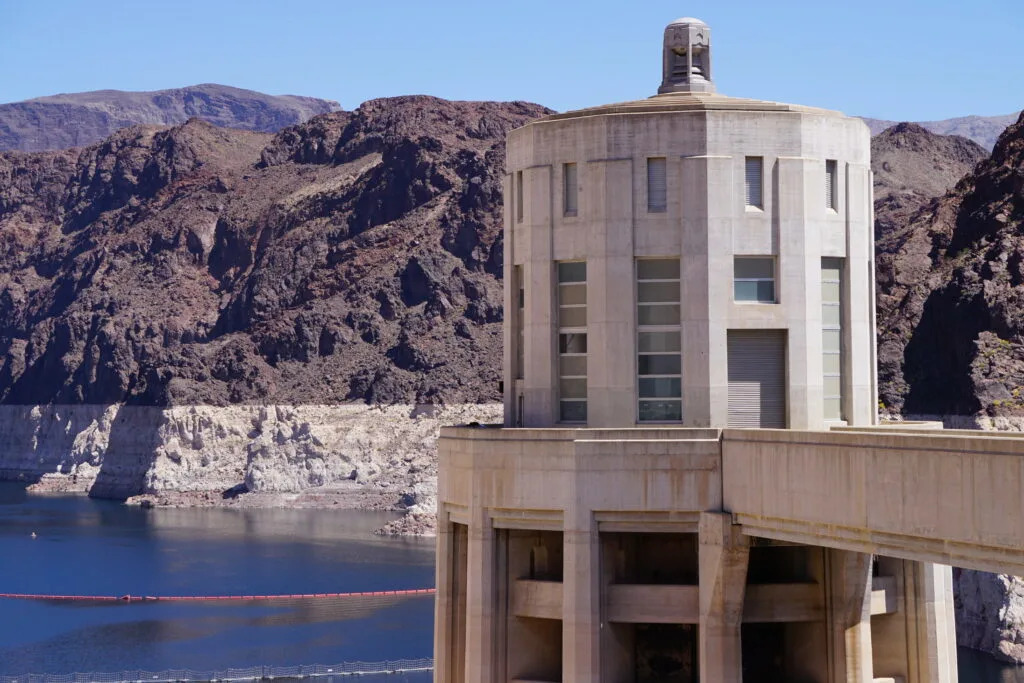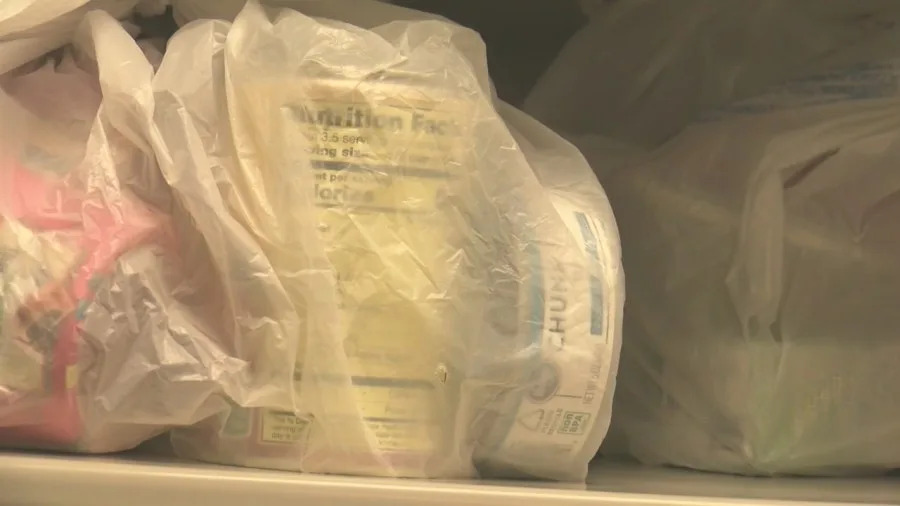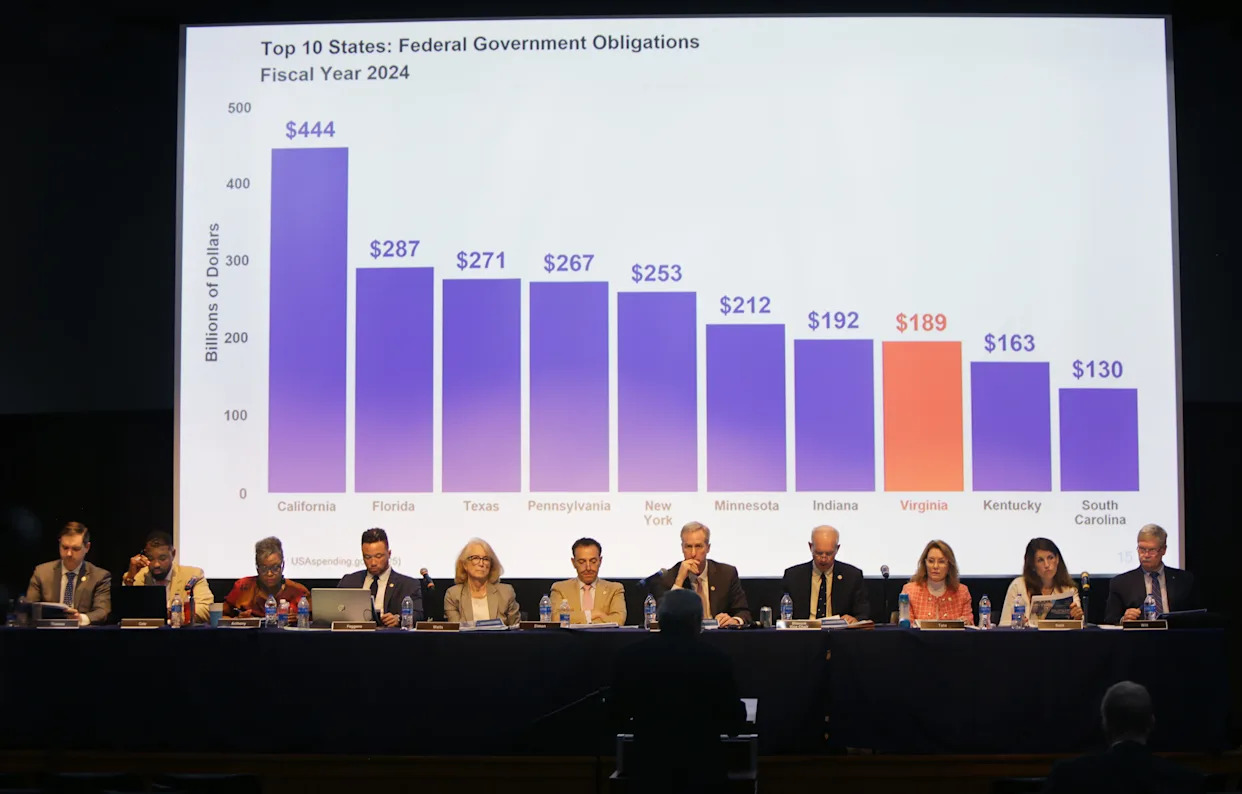
Federal water managers decide shortage levels each year in August, based on projected water levels at Lake Mead and Lake Powell for the start of the following year. (Photo: Jeniffer Solis/Nevada Current)
Federal officials announced Friday they would continue water allocation cuts on the Colorado River for the fifth consecutive year following a persistent drought that’s shrunken the river’s largest reservoir.
The Bureau of Reclamation announced that Tier 1 water cuts — the least severe shortage condition — would continue next year to preserve water levels at Lake Mead, which supplies about 90% of Las Vegas’ water.
Federal water managers decide shortage levels each year in August, based on projected water levels at Lake Mead and Lake Powell for the start of the following year.
Lake Mead’s elevation is currently at about 1,054 feet above sea level – 175 feet below what’s considered full. Based on water storage, the reservoir is at 31% of capacity. Friday BuRec projected that by the end of this year water elevation will be only a foot higher.
The water cuts are aimed at Arizona and Nevada, which will lose 18% and 7% of their annual allotment of Colorado River water once again. Mexico, which also receives water from the river, will see its annual allotment reduced by 5%, federal officials said.
The continued cuts underscore “the importance of immediate action to secure the future of the Colorado River,” said David Palumbo, the Bureau of Reclamation’s acting commissioner in a statement, adding that “we must develop new, sustainable operating guidelines that are robust enough to withstand ongoing drought and poor runoff conditions.”
Nevada’s cut amounts to a loss of 21,000 acre-feet of water for another year. However, the cuts are not expected to affect Nevada water users.
Southern Nevada is allowed 300,000 acre-feet from the Colorado River, but has not used its full allocation in years thanks to conservation efforts. Last year, Nevada only used about 212,000 acre-feet of water, a reduction of nearly 6% compared to the previous year.
Nevada also returned about 244,000 acre-feet back to Lake Mead in 2024 through a community-wide water recycling program, which allowed the state to take more water from the lake.
“As the smallest user of the Colorado River, Nevada has reduced its consumption of Colorado River water by 36 percent over the past two decades,” said Bronson Mack, SNWA spokesperson in a statement. “The Bureau of Reclamation’s recent study underscores the impact that climate change is having on the river system and the critical importance of broad conservation strategies throughout the Colorado River Basin.”
The cuts announced Friday are in the same Tier 1 category declared last year and in 2021, when the first federal cutback on the Colorado River water took effect. A “Tier 2” water shortage for 2023 resulted in even steeper cuts.
Based on Reclamation’s most recent hydraulic models, Lake Mead water level will likely fall below 1,050 feet by July 2026, triggering another Tier 2 shortage that would reduce annual available water for Nevada by another 4,000 acre-feet.
The lackluster reservoir forecast follows a winter of below-average snowpack across the Upper Colorado River Basin, a major source of snowmelt for Lake Mead and Lake Powell.
Hydraulic studies by the federal government show the river’s flow will likely decrease by 3 million acre-feet of water in the next decade, making conservation efforts more urgent.
The Colorado River Basin supplies drinking water to 40 million people across the lower basin — Arizona, California, Nevada and Mexico — and the upper basin — Colorado, New Mexico, Utah and Wyoming.
The water cuts come as the seven states that share the Colorado River’s water are in deadlocked negotiations over how the river and its reservoirs should be managed after current guidelines expire at the end of 2026.
Negotiations have continued behind closed doors for months as water officials try to reach an agreement. Upper and Lower Basin states have remained split on which half of the river should decrease their water use, and by how much.
The federal government has given the states until mid-November to come up with a draft for a new plan. If they can’t reach a deal ahead of a 2026 deadline, the federal government can step in and make those decisions itself.
“As the basin prepares for the transition to post-2026 operating guidelines, the urgency for the seven Colorado River Basin states to reach a consensus agreement has never been clearer. We cannot afford to delay,” said Department of the Interior’s Acting Assistant Secretary for Water and Science Scott Cameron. “The health of the Colorado River system and the livelihoods that depend on it are relying on our ability to collaborate effectively and craft forward-thinking solutions that prioritize conservation, efficiency, and resilience.”








Comments